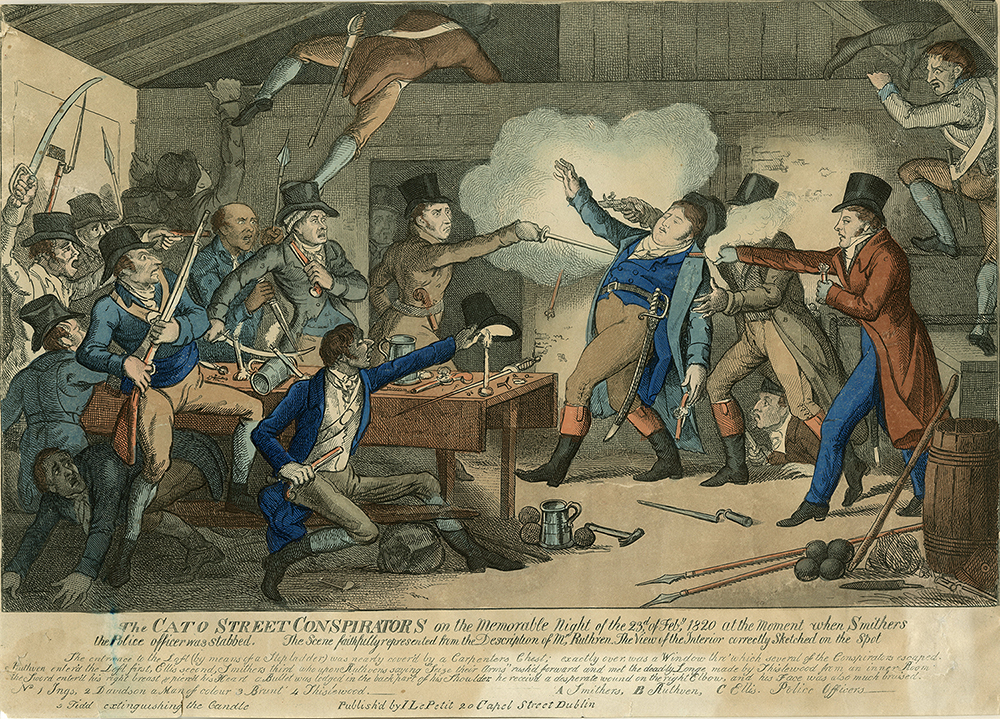
Introducing our latest digitised object to the Royal Armouries Image Library. February marks 200 years since the Cato Street Conspiracy. This print depicts the arrest of the conspirators who plotted to assassinate the Prime Minister on 23rd February 1820. Although not as infamous as the gunpowder plot, the intentions of these Cato Street conspirators were no less catastrophic.
With the dawn of industrialisation and the end of Napoleonic Wars, early 19th century Britain was witness to a changing society; rebellion, riots and reform occurring across the nation.
Following a failed rebellion of 1817 there was a second wave of protest for parliamentary reform, known today as the Peterloo Massacre. Held in Manchester in August 1819, news of Peterloo quickly spread, triggering further protest across Britain and the threat of rebellion was strongly felt around the nation.
In London, a scheme to murder the Prime Minister and members of his Cabinet was devised. Led by Arthur Thistlewood; a group of 13 political radicals conspired in Cato Street, Marylebone where they hoped their plans would ignite a political revolution in Britain. It was here in Cato Street that their headquarters were raided, the group were arrested and thus becoming known as the Cato Street Conspirators. An array of weapons was found including daggers; guns; pistols; pike heads and even a recipe for explosive fireballs, condemning the group of their deadly plot.
8 of the conspirators were committed to the Tower of London, where we still house some of our historic collection in the White Tower. For Thistlewood, this was his second detention here, (having been accused of treason in 1816 of which he was acquitted) this time as a resident in the Bloody Tower.

It is thought by some that this was a Government trap with the group purposefully infiltrated and tracked leading to their eventual deportation or execution. Perhaps an example to all those who considered taking on a rebellion of their own?
